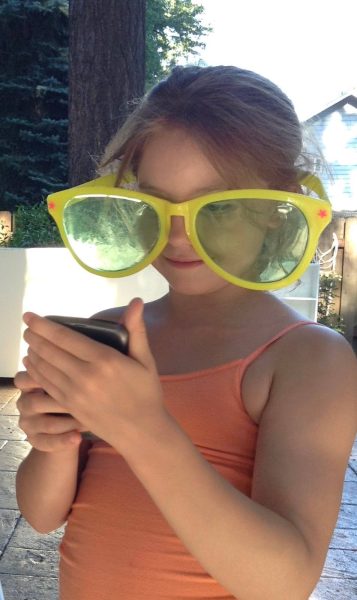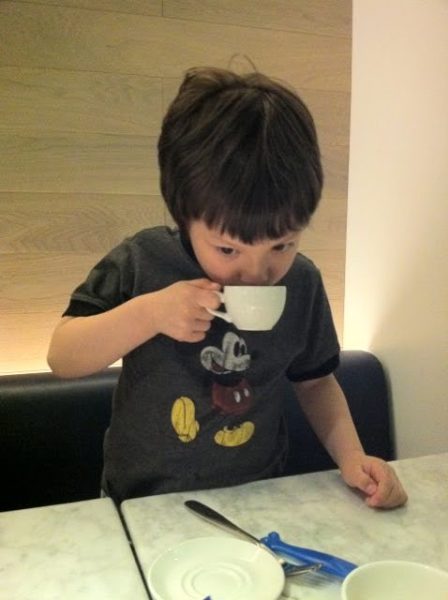You Should Watch “Avatar: The Way of Water”
February 16, 2023
As a child, “Avatar” was my favorite movie. Multiple times a year, my family would pull out “Avatar” (believe it or not, we owned the Blu-ray DVD) and we would watch the whole two hours and 42 minutes. The world of “Avatar” was unlike any other, and I always wanted more.
But when I first heard about the sequel, “Avatar: The Way of Water,” I wasn’t in the same headspace. I knew that I loved the original movie, but things like names, places and even major plot points were somewhat lost on me. Sure, I rewatched the first one in preparation for the second installment, but I went into the movie very neutral.
I came out of the movie electrified. I had forgotten how stunning the world of Pandora was on its own. Having just seen the first one allowed for me to truly appreciate the improvements that had been made in the CGI since 2009 without being overwhelmed by an entirely new aesthetic, which Cameron cleverly avoided.
I was worried a bit that the story was going to be lacking, as the first movie was a well-contained story, but “The Way of Water” didn’t feel like a money grabbing endeavor; instead, there was further world exploration and a genuine continuation of the original story that didn’t just materialize.
Similarly, I found myself even more invested in the central family rather than just Jake Sully as a protagonist. Though the introduction of a family is often a 50/50 on whether or not it ruins sequels, it really works in “The Way of Water,” with the kids improving the narrative rather than being used as plot devices. In fact, I would argue that Sully’s children are more of the protagonists of the film, with his character transitioning into a supporting role and opening up more potential character arcs that the kids can explore. I felt that each “second generation” character (despite there being six-ish of them) was developed enough to feel individual and complex, and the overall emphasis on developing characters was a lot more present in “The Way of Water” as opposed to the original.
I was also anticipating an opposition to the new setting of the story— the setting being in the ocean—to be cumbersome, as the original forest backdrop worked so well. I was surprised when it did the very opposite; I thoroughly enjoyed the introduction of a new culture and the scenes that focused on the Metkayina, or “the way of water” even more so than I enjoyed the original exploration into the forests of Pandora. The differences between the two tribes were distinct enough to feel new, and the introduction of a new clan invited different conflicts. The water scenes were visually stunning, and Cameron’s mastery of the VFX landscape was on full display.
That being said, there were certainly gripes I had with the movie. The plot was definitely the standout as the worst part of the movie. The inciting incident of the Sully family leaving the entire Omatikaya clan felt very jarring and created a weird pace following the opening scene. There were also conceptual gaps in logic that appeared at the final and climactic battle, particularly when the entire army from the Metkayina tribe seemingly vanished, leaving only the Sully family to take on the human military. There was also the entire plotline of Kiri and her seizure disorder, and it seemed to become a mere inconvenience in the larger plot of the movie, having never been mentioned after her singular incident.
But there is a looming consideration that many critics aren’t acknowledging when it comes to the murky plot: this is at best a setup movie and at worst a filler movie. This is in no way a conclusive film. Cameron stated that even if “The Way of Water” was a flop, he would still go ahead with a third installment. By any standard, “The Way of Water” is the start of a saga, and the questions we leave with should be considered more as cliffhangers and less as “plot holes.”
With all of that said, I was once again shocked, this time by the criticism; with the theatrical re-releases, “Avatar” has reclaimed the number one grossing movie of all time, and “The Way of Water” is ranked as the seventh highest grossing film at the time of this article. These movies are box office sensations, so why are people so quick to hate?
I think critics and viewers alike have developed a certain propensity for hate. A lot of criticism today seems to be rooted in the idea of complexity, or rather that a lack of complexity is an automatic deduction in quality, but I want to circle back to something that I had previously mentioned, and one of my main takeaways: this film is an escape. There is no better world to get lost in. You cheer for the characters, gasp at the visuals, lean in at the action and grieve for the losses. “The Way of Water” is not a commentary on the interdisciplinary psyche of humanity; it is a film of love for our planets and our families. This movie is the greatest display of escapism.
As a viewer, I loved this film. Perhaps it was not the best movie ever created, but that title is as subjective as it is singular.




